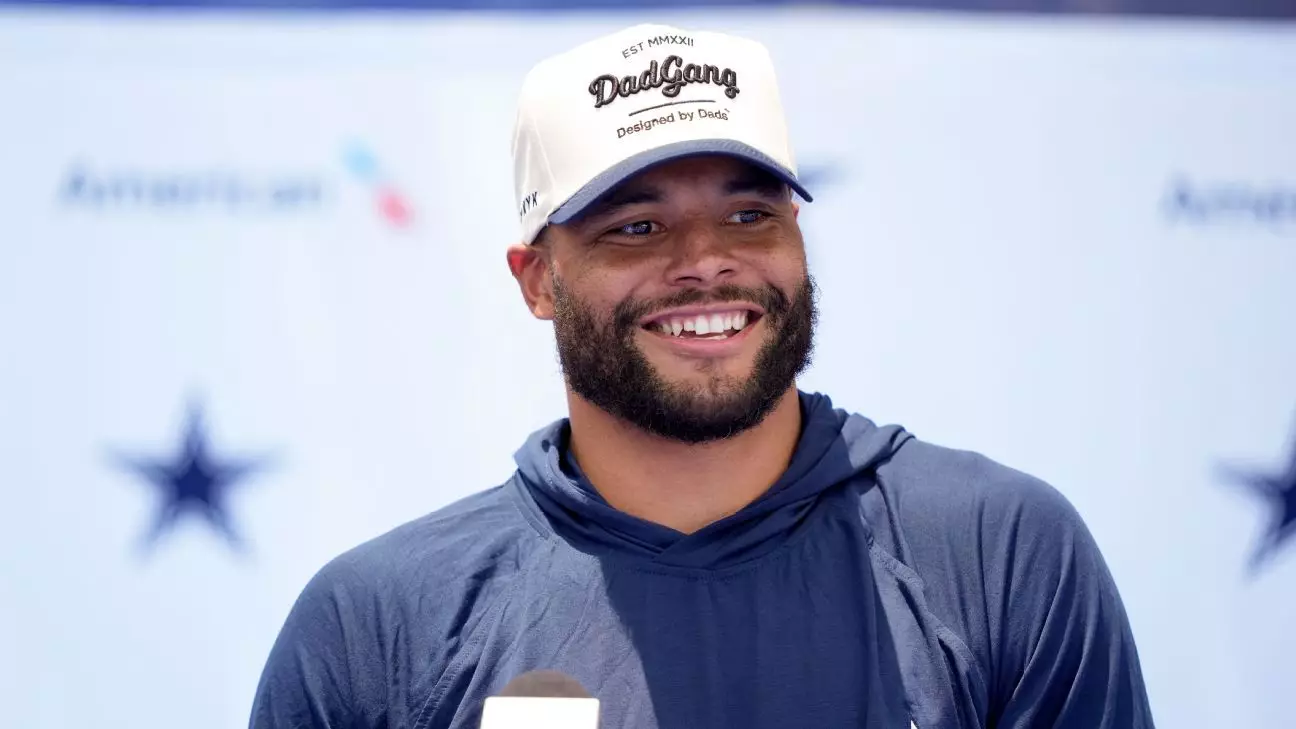In a significant move for both the Dallas Cowboys and star quarterback Dak Prescott, the franchise has secured a four-year contract extension valued at $240 million. This landmark deal cements Prescott’s status as the highest-paid player in NFL history, with an astonishing $231 million guaranteed—setting a new benchmark in professional football. This contract surpasses the previous record held by Deshaun Watson, whose fully guaranteed $230 million deal with the Cleveland Browns had generated considerable buzz within the sports community.
The financial implications of this agreement extend beyond mere prestige; Prescott’s average annual salary of $60 million takes him far above fellow standout quarterbacks like Joe Burrow, Jordan Love, and Trevor Lawrence, each of whom had previously topped out around $55 million annually. Adding to this impressive financial landscape, Prescott has received an unprecedented signing bonus of $80 million, eclipsing Love’s earlier record of $75 million.
Strategic Timing and Negotiation Efforts
The announcement of Prescott’s new deal came just hours before the Cowboys were set to kick off their season opener against the Cleveland Browns, highlighting the urgency and importance of the negotiations conducted over the preceding weekend. This rapid resolution is a testament to both Prescott’s value to the franchise and the Cowboys’ strategic foresight to avoid compromising their future quarterback prospects.
By solidifying Prescott’s position within the team, the Cowboys have effectively sidestepped the looming uncertainty of finding a franchise quarterback in 2025 or beyond. As the NFL evolves, identifying a reliable quarterback becomes increasingly crucial, particularly given the competitive nature of the league. Prescott’s retention not only stabilizes the team’s offensive direction but also alleviates concerns around salary cap management—factors that can derail a franchise’s ambitions.
Prescott’s Journey and Career Highlights
Prescott’s ascent to the pinnacle of NFL contracts is a compelling story colored by both challenges and triumphs. Drafted in 2016, Prescott has delivered commendable performances over his career, including leading the Cowboys to the postseason in multiple consecutive seasons. His performance last season was particularly noteworthy; he compiled over 4,500 passing yards with 36 touchdown passes, clinching the title of the league’s top touchdown producer.
Despite these impressive statistics, the Cowboys face a bittersweet reality: the struggle to reach the NFC Championship Game. Since Prescott’s arrival, the team has met occasional playoff success but has ultimately faltered in advancing past the divisional rounds. This repetitive disappointment adds weight to the pressure Prescott feels as he strives not only to break his own records but also to fulfill the aspirations of a fervent fanbase yearning for a Super Bowl victory—a goal not achieved since the era of legendary quarterback Troy Aikman and highlight reel moments of Super Bowl XXX.
Prescott, who turned 31, now faces the critical task of elevating the Cowboys back into championship contention while embodying the tenets of leadership and resilience. The legacy of Dallas quarterbacks like Roger Staubach and Aikman looms large, adding to the scrutiny and expectations that come with donning the star on one’s helmet.
However, Prescott’s commitment to both football and community through his Faith, Fight, Finish Foundation demonstrates a multifaceted persona. His accolades include being honored with the Walter Payton Man of the Year award in 2022, illustrating his dedication beyond the field—an aspect that resonates deeply with fans and players alike.
As Prescott continues to write his story with the Cowboys, the organization as a whole stands poised to undergo a transformative journey. The new contract not only positions Prescott as a foundational piece for the immediate future but also as a potentially iconic figure in Cowboys history. Should he succeed in leading the team to the playoffs and ultimately a Super Bowl victory, Prescott could cement his legacy as the franchise’s all-time leader in various statistical categories, including passing yards and touchdowns.
Ultimately, while the Cowboys’ current roster showcases remarkable talent, Prescott and the team face a pressing question: can they finally overcome the shadows of past disappointments to capture the elusive championship? The pressure of legacy looms large, but if this contract extension proves anything, it is that both the Cowboys and Prescott are committed to writing a new narrative—one filled with aspirations, perseverance, and the hope of returning to glory that has evaded the franchise for nearly three decades.


Leave a Reply